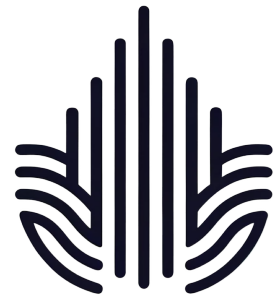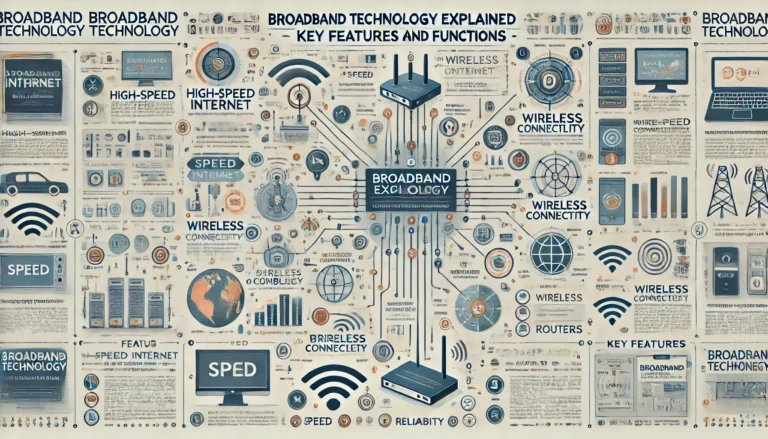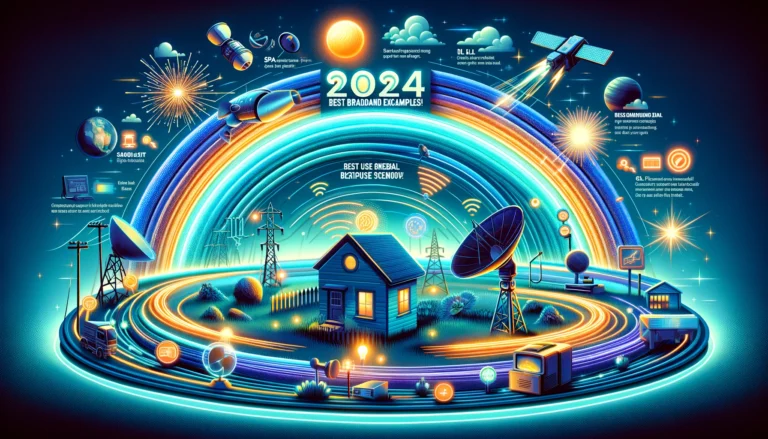Top Broadband Examples: Best Choices 2024
In the ever-evolving world of internet technology, selecting the right broadband provider is crucial for ensuring reliable and speedy online access. As we move into 2024, the landscape of broadband options continues to expand, offering consumers a variety of choices tailored to meet their specific needs. Whether you’re a heavy streamer, a competitive gamer, or need dependable internet for everyday use, understanding the top broadband examples available in 2024 can help you make an informed decision. In this post, we will explore some of the best broadband choices, highlighting their key features, benefits, and what makes them stand out in the crowded market.
1. Fiber Optic Solutions: The Gold Standard
Fiber optic technology remains the gold standard for broadband in 2024. Offering unparalleled download and upload speeds, fiber provides a seamless internet experience with virtually no latency or buffering issues. Top providers like Verizon Fios and Google Fiber offer packages that can reach up to 2 Gbps, catering to the most demanding internet users. The key advantage of fiber optic is its consistency in speed, regardless of the user count or peak usage times.
2. Cable Internet: Widely Available and Reliable
Cable internet is a widely available option that offers robust service at competitive prices. Providers like Comcast Xfinity and Spectrum have upgraded their infrastructure to provide speeds that rival fiber optics in many areas. Cable internet is particularly appealing because of its extensive coverage, making it a viable option for those in both urban and suburban areas. The introduction of DOCSIS 3.1 technology has significantly increased the capacity and speed of cable services.
3. DSL Internet: Budget-Friendly for Rural Areas
For those in rural areas, DSL remains a pertinent option. Providers such as AT&T and CenturyLink offer DSL services that, while slower than fiber and cable, provide a stable and affordable internet connection. In 2024, advancements in DSL technology have improved its efficiency, making it a more competitive choice for those without access to fiber or cable.
4. Satellite Internet: Connectivity in the Most Remote Areas
Satellite internet has seen remarkable improvements, with companies like Viasat and HughesNet leading the charge. The launch of new satellites has enhanced coverage and increased speeds, making satellite internet a more attractive option for those in remote locations. While it still suffers from higher latency compared to terrestrial broadband options, ongoing innovations are narrowing this gap.
5. Fixed Wireless Access (FWA): The Rising Star
FWA has emerged as a promising broadband alternative, especially in areas that lack the infrastructure for fiber or cable. Companies like T-Mobile and Verizon have expanded their FWA offerings, which use cellular technology to provide home internet service. With the expansion of 5G networks, FWA is set to become a more powerful player in the broadband market, offering speeds and latency that are comparable to wired connections.

How to Choose the Right Broadband Option for You
Choosing the exemplary broadband service in 2024 involves considering several factors:
- Speed Requirements: Assess your internet usage. Heavy downloaders, gamers, and large households will benefit from higher speeds available through fiber and cable.
- Availability: Check which services are available in your area. Urban dwellers might have access to all types, while rural areas might be limited to DSL or satellite.
- Budget: Consider your budget. Fiber and cable generally offer the best speed for your dollar, but DSL and satellite can be more economical choices in certain situations.
- Reliability: Look for providers known for reliable service. Read customer reviews and research the provider’s service stability, especially during peak times.
Conclusion
The landscape of broadband choices in 2024 offers a solution for every type of user. From the blazing-fast speeds of fiber optics to the reliable reach of DSL and satellite, there’s a broadband type to suit any need and budget. By understanding the strengths and limitations of each type, you can choose a broadband service that not only meets your demands but also provides a reliable and efficient gateway to the digital world. Keep these insights in mind to navigate the complex broadband market and make a choice that best aligns with your internet needs.





